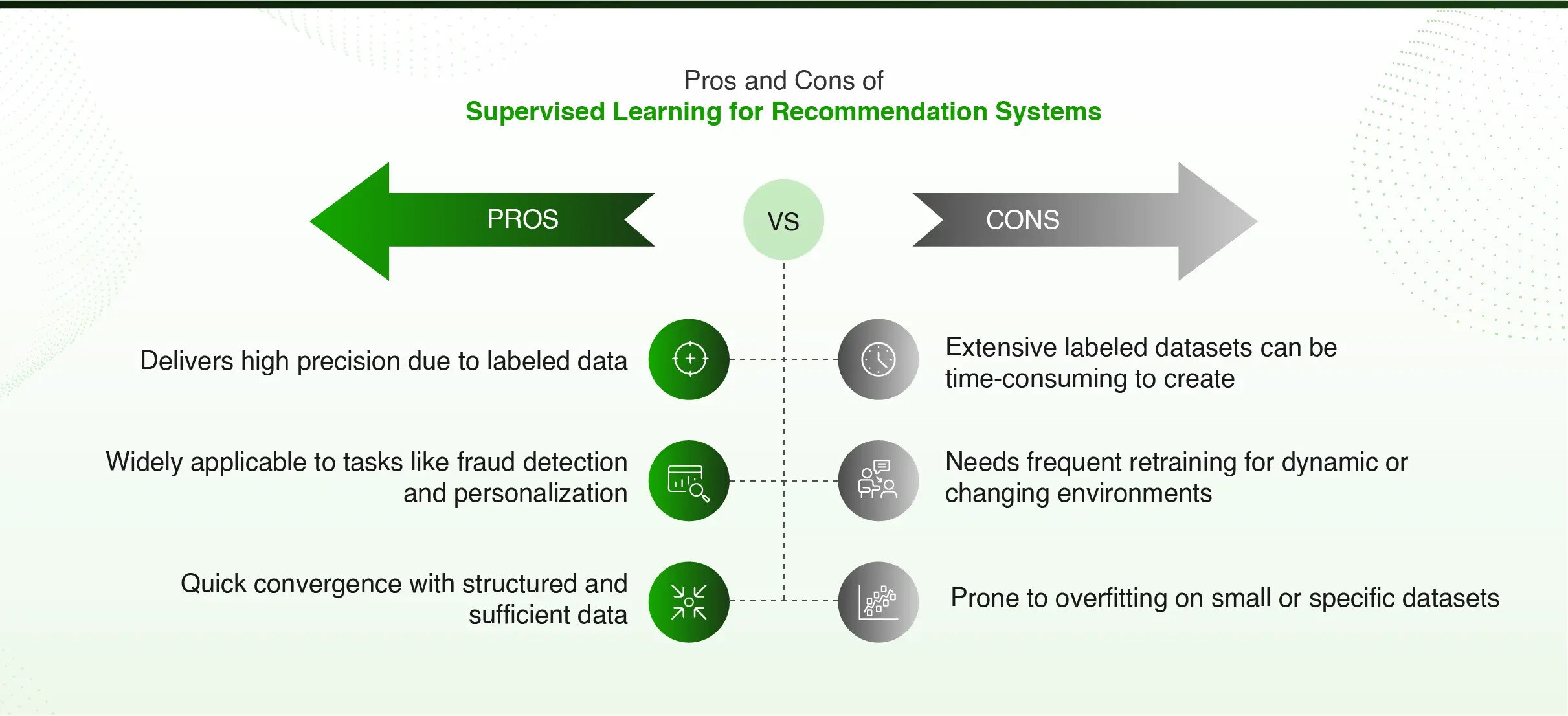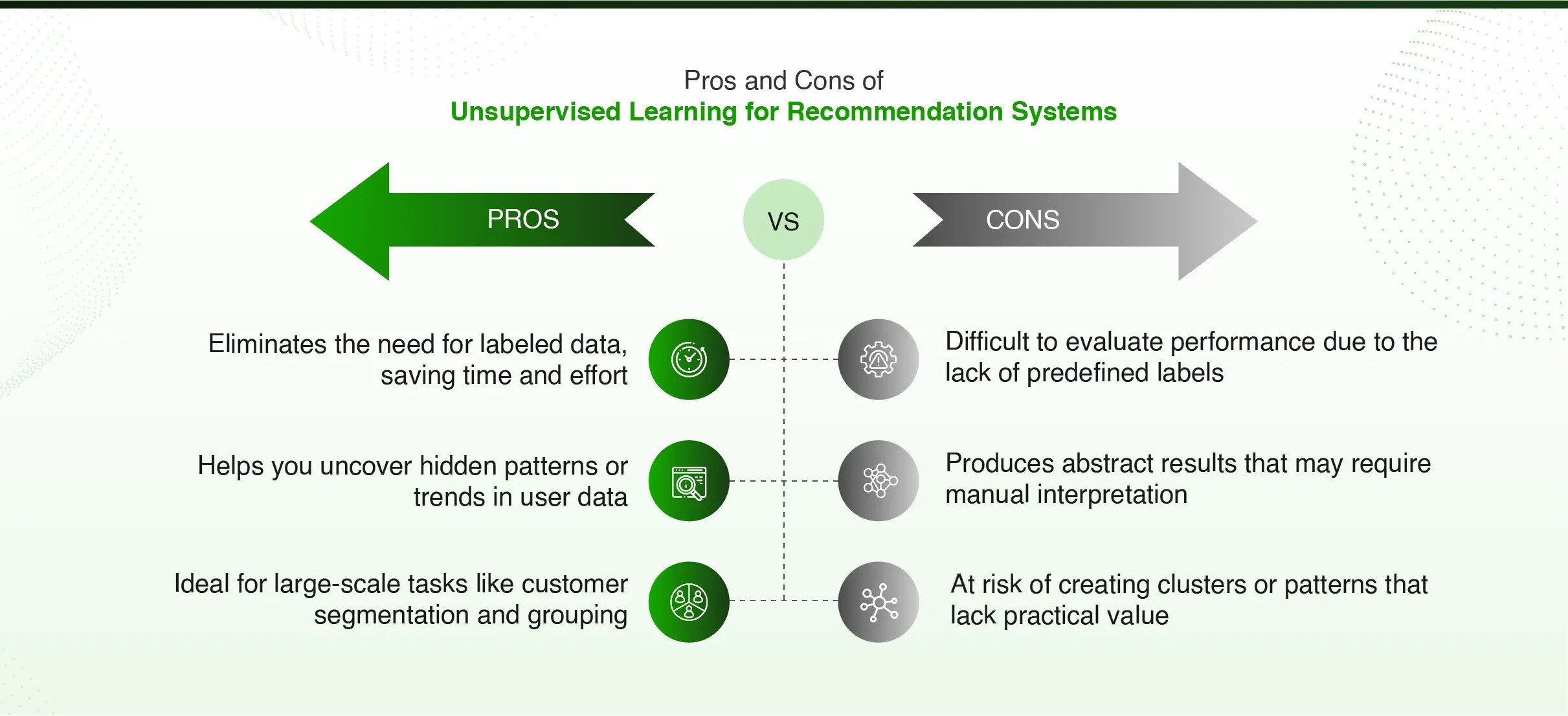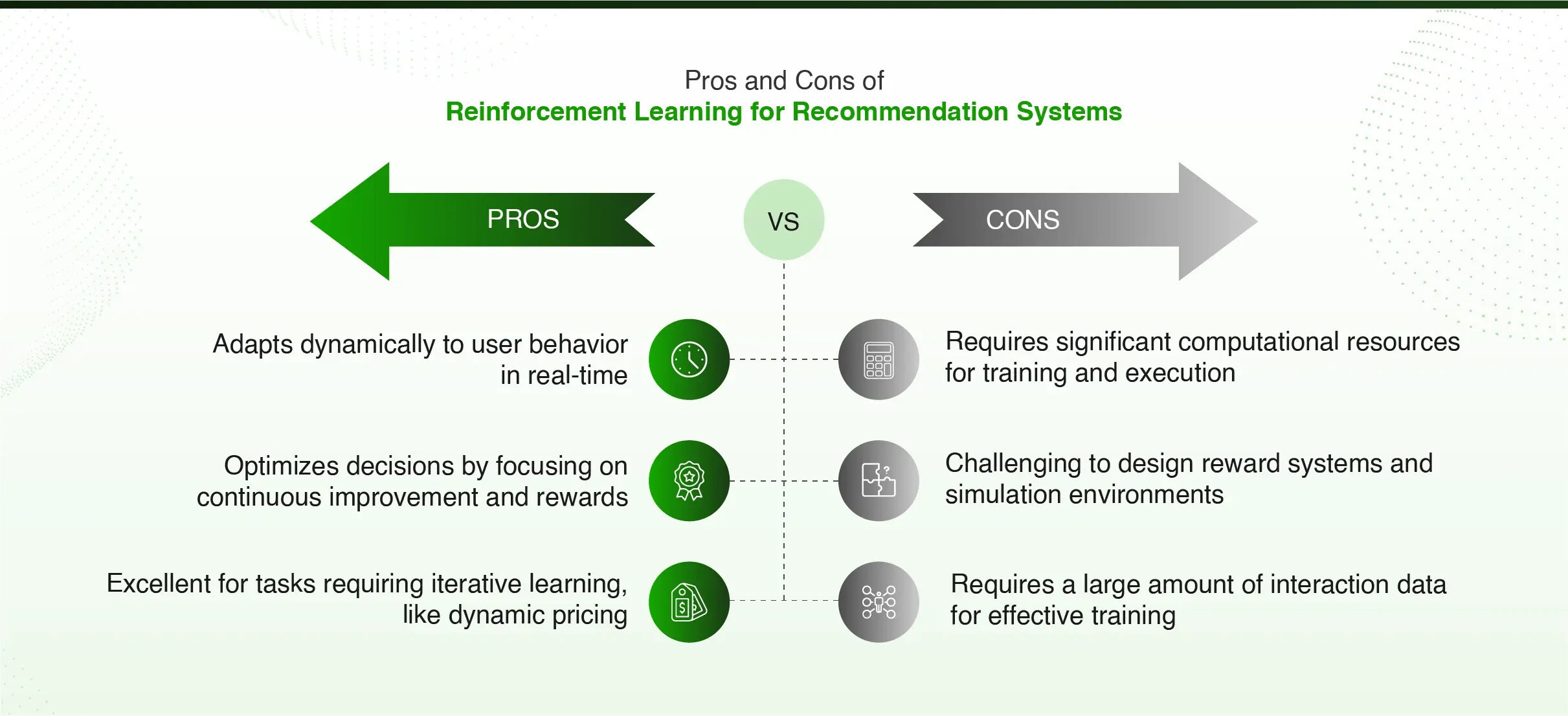
Supervised vs. Unsupervised vs. Reinforcement Learning: What Works for Your Recommendation System
Table of Contents
Recommendation systems are the invisible engines behind all your customers’ favorite applications and platforms. E-commerce giants like Amazon, streaming platforms like Netflix, and UGC platforms like YouTube rely on these systems to keep users engaged and increase revenue.
Their ability to process massive datasets and deliver hyper-personalized results has made recommendation engines a cornerstone of modern technology.
But here’s the catch—how you build your recommendation system matters. The choice between reinforcement or supervised or unsupervised machine learning for recommendation systems determines its effectiveness.
Pick the right algorithm, and you’re on the path to success; choose poorly, and you risk delivering irrelevant, uninspiring results.
So, should you select supervised, unsupervised, or reinforcement learning for your recommendation system? In this blog, we’ll explore what makes these systems tick and how to choose the best learning approach for your goals. Let’s break it down.
Supervised Learning: Turning Labeled Data into Predictions
Supervised learning is like teaching with a guide. You provide the system with historical input-output pairs, where each input is matched to a clearly defined “ground-truth” label.
The algorithm uses this labeled data to identify patterns, correlations, and trends, helping it predict outcomes for new and unseen inputs.
Supervised learning excels unsupervised or reinforcement learning in scenarios where you have structured and labeled data.
For instance, when analyzing loan defaults for a recommendation system that tells loan officers whether or not to approve applications or which loan applicants to prioritize, you would train the system with 1,000 cases—500 defaulters and 500 non-defaulters. This “supervision” teaches the model to recognize patterns tied to defaults, so it can make accurate predictions when new cases arise.
Supervised learning algorithms: Linear Regression, Logistic Regression, Decision Trees, Random Forest, Support Vector Machines (SVM), and k-Nearest Neighbors (kNN)
Pros and Cons of Supervised Learning for Recommendation Systems

Unsupervised Learning: Finding Patterns in the Unknown
Unsupervised learning skips the need for labeled data, allowing the machine to explore freely and uncover patterns you might not know. Instead of being told what to look for, the algorithm analyzes raw data and organizes it into clusters or associations based on shared characteristics.
With unsupervised learning, you don’t need predefined labels like “preferred” or “not preferred.”
Instead, the algorithm might cluster users based on traits like browsing habits or purchase frequency, revealing groups of similar users. These insights can be invaluable for fine-tuning recommendation strategies.
Common applications include segmenting customers based on behavior, grouping inventory by performance, or identifying trends in user interactions. While unsupervised learning doesn't provide direct predictions, its ability to identify hidden patterns makes it a powerful tool for exploratory tasks in recommendation systems.
Unsupervised learning algorithms: K-Means, Hierarchical Clustering, PCA(Principal Component Analysis), and t-SNE ( t-Distributed Stochastic Neighbor Embedding)
Pros and Cons of Unsupervised Learning for Recommendation Systems

Reinforcement Learning: Training Models Through Rewards
Reinforcement learning takes a trial-and-error approach where the algorithm (or agent) interacts with its environment, earning rewards for correct actions and penalties for mistakes.
Over time, it figures out strategies to maximize rewards. For your recommendation system, this means the model can adapt dynamically—if it recommends a product you like, it gets rewarded; if you skip it, it learns to improve next time.
This method is perfect for complex and dynamic systems where decisions need to evolve in real-time. When comparing reinforcement learning vs supervised learning, reinforcement shines in environments where user behaviors constantly change.deep reinforcement learning, you can tackle advanced tasks like personalizing user experiences, optimizing supply chains, or even training robots to perform intricate tasks.
Reinforcement learning requires significant computational resources and careful design of the reward structure. If you're looking for a way to build evolving systems, this approach might be the game-changer you need.
Reinforcement learning algorithms: Q-Learning, SARSA, DQN, and A3C
Pros and Cons of Reinforcement Learning for Recommendation Systems

Real-World Wins: Applications of Each Learning Method
Here’s how global giants choose between reinforcement learning, supervised learning, and unsupervised learning to enhance user experiences:
- Netflix pushes boundaries with reinforcement learning and matrix factorization. It learns from your interactions in real-time to optimize recommendations, ensuring you always have something binge-worthy on your screen.
- Netflix’s approach highlights the power of reinforcement learning over supervised learning, especially in dynamic and personalized recommendation systems.
- Amazon leverages supervised learning to analyze purchasing history, browsing habits, and product ratings. Algorithms like K-Nearest Neighbors (KNN) classify users into groups and retrieve the most relevant product recommendations, boosting sales and satisfaction.
- Panasonic utilizes unsupervised learning to develop models that adapt to datasets of varying sizes and complexities. This technology reduces the need for manual tuning and extracts meaningful patterns even from limited or unknown data, expanding the scope of AI applications in real-world scenarios.
Picking the Perfect Algorithm for Your Recommendation System
Choosing between reinforcement, supervised, or unsupervised machine learning for your recommendation system depends on the type of data you have and your business goals. Here’s how you can decide:
- Data availability: If you have plenty of labeled data, go for supervised learning to make accurate, structured predictions. If your data is unlabeled, unsupervised learning is better for finding meaningful clusters or trends. Reinforcement learning thrives when you can collect interaction data over time.
- Computational power: Supervised and unsupervised methods are generally lightweight compared to reinforcement learning, which demands significant processing power for simulations and iterative training.
- Business goals: Need static, rule-based recommendations? Supervised learning works well. Want to discover new user segments? Unsupervised learning fits the bill. For dynamic, ever-evolving personalization, reinforcement learning is the ultimate choice.
HireCoder AI: Your Partner in Building Recommendation Systems
Understanding the differences between reinforcement learning and supervised learning helps you choose when and how to apply it effectively for evolving systems. When you understand the differences, it becomes easier to select reinforcement learning over supervised learning for systems that require continuous improvement.
However, figuring out which algorithm works best for your recommendation system is just the start.
The real challenge—and opportunity—lies in turning that insight into a system that delivers results day in and day out. That’s where HireCoder AI comes in.
We specialize in creating tailored AI solutions for your recommendation system, whether it’s reinforcement, supervised, or unsupervised machine learning.
Our technologies don’t just meet your current needs—they grow with you, helping you scale seamlessly.
From improving your product recommendations to automating processes and making smarter, data-driven decisions, we build recommendation systems designed specifically for your business.
Ready to bring your recommendation system to life? HireCoder AI is here to make it happen.
FAQs
- How does reinforcement learning improve recommendation systems?
Reinforcement learning improves recommendation systems by learning from user interactions in real time. It adapts dynamically to changes in user behavior, optimizing suggestions to maximize engagement and satisfaction. - What type of learning algorithm is used for recommendation systems?
Common algorithms include supervised methods like regression and classification, unsupervised methods like clustering, and reinforcement learning for dynamic, real-time recommendations. Each algorithm suits different needs based on data availability and complexity. - What makes machine learning essential for recommendation systems?
Machine learning processes vast amounts of user data to identify patterns, predict preferences, and deliver personalized recommendations. Its ability to adapt and improve makes it indispensable for modern recommendation systems. - What is the difference between reinforcement learning vs supervised learning?
Supervised learning uses labeled data to predict outcomes, while reinforcement learning relies on trial-and-error interactions with an environment to optimize rewards. Reinforcement learning is ideal for dynamic systems requiring continuous improvement.
Related Posts
How Is AI Being Used in Healthcare: Benefits and Future
In one striking case, a surgeon at the West Los Angeles VA Medical Center...
AI Agents for Business: Simplifying Workflows with Intelligence
How do businesses stay competitive in a world where change is constant and...
Generative AI vs Predictive AI: Which One Should You Choose?
How do you know which type of AI suits your needs? Take generative AI, for...
Supervised vs. Unsupervised vs. Reinforcement Learning: What Works for Your Recommendation System
Recommendation systems are the invisible engines behind all your...



